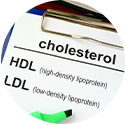September 1st – It may be possible to train the brain to prefer healthy low-calorie foods over unhealthy higher-calorie foods, according to new research by scientists at the Jean Mayer USDA Human Nutrition Research Center on Aging (USDA HNRCA) at Tufts University and at Massachusetts General Hospital. Published online today in the journal Nutrition & Diabetes, a brain scan study in adult men and women suggests that it is possible to reverse the addictive power of unhealthy food while also increasing preference for healthy foods.
“We don’t start out in life loving French fries and hating, for example, whole wheat pasta,” said senior and co-corresponding author Susan B. Roberts, Ph.D., director of the Energy Metabolism Laboratory at the USDA HNRCA, who is also a professor at the Friedman School of Nutrition Science and Policy at Tufts University and an adjunct professor of psychiatry at Tufts University School of Medicine. “This conditioning happens over time in response to eating – repeatedly! – what is out there in the toxic food environment.”
Scientists have suspected that, once unhealthy food addiction circuits are established, they may be hard or impossible to reverse, subjecting people who have gained weight to a lifetime of unhealthy food cravings and temptation.
To find out whether the brain can be re-trained to support healthy food choices, Roberts and colleagues studied the reward system in thirteen overweight and obese men and women, eight of whom were participants in a new weight loss program designed by Tufts University researchers and five who were in a control group and were not enrolled in the program.
Both groups underwent magnetic resonance imaging (MRI) brain scans at the beginning and end of a six-month period. Among those who participated in the weight loss program, the brain scans revealed changes in areas of the brain reward center associated with learning and addiction. After six months, this area had increased sensitivity to healthy, lower-calorie foods, indicating an increased reward and enjoyment of healthier food cues. The area also showed decreased sensitivity to the unhealthy higher-calorie foods.
“The weight loss program is specifically designed to change how people react to different foods, and our study shows those who participated in it had an increased desire for healthier foods along with a decreased preference for unhealthy foods, the combined effects of which are probably critical for sustainable weight control,” said co-author Sai Krupa Das, Ph.D., a scientist in the Energy Metabolism Laboratory at the USDA HNRCA and an assistant professor at the Friedman School.
Getting rid of Bad Habits
Doctors at the University of Zurich say you can live longer thanks to fruit, an active lifestyle, limited alcohol and no cigarettes. This is the conclusion of a study by public health physicians at the University of Zurich who documented for the first time the impact of behavioral factors on life expectancy in numbers. The results are to be taken over into prevention and health counselling in primary care.
For the study the researchers used data from the Swiss National Cohort (SNC). The Zurich public health physicians focussed on heart disease and cancer as they account for the most deaths in Switzerland. The researchers succeeded in correlating data on tobacco consumption, fruit consumption, physical activity and alcohol consumption from 16,721 participants aged between 16 and 90 from 1977 to 1993 with the corresponding deaths up to 2008. The impact of the four forms of behaviour was still visible when biological risk factors like weight and blood pressure were taken into account as well.
The researchers found:
- Compared with a group of non-smokers, smokers have a 57 percent higher risk of dying prematurely.
- The impact of an unhealthy diet, not enough sport and alcohol abuse results in an elevated mortality risk of around 15 percent for each factor. But combined then risks factors are greater than the sum of their parts: “We were very surprised by the 2.5 fold higher risk when all four risk factors are combined”, explains researcher Brian Martin. Hence, the probability of a 75-year-old man with all risk factors surviving the next ten years is, for instance, 35 percent, without risk factors 67 percent – for a woman 47 and 74 percent respectively.
Effects only appear in later life
According to Martin an unhealthy lifestyle has above all a long-lasting impact. Whereas high wine consumption, cigarettes, an unhealthy diet and physical inactivity scarcely had any effect on mortality amongst the 45 to 55-year-olds, it does have a visible effect on 65 to 75-year-olds. The probability of a 75-year-old man with none of the four risk factors surviving the next ten years is 67 percent, exactly the same as the risk for a smoker who is ten years younger, doesn’t exercise, eats unhealthily and drinks a lot.1
Fruit and Vegetables make you live longer
Supporting research says eating seven or more portions of fruit and vegetables a day reduces your risk of death at any point in time by 42% compared to eating less than one portion. Researchers studied the eating habits of 65,226 people representative of the English population between 2001 and 2013, and found that the more fruit and vegetables they ate, the less likely they were to die at any age. Eating seven or more portions reduces the specific risks of death by cancer and heart disease by 25% and 31% respectively. The research also showed that vegetables have significantly higher health benefits than fruit.
This is the first study to link fruit and vegetable consumption with all-cause, cancer and heart disease deaths in a nationally-representative population, the first to quantify health benefits per-portion, and the first to identify the types of fruit and vegetable with the most benefit.
Compared to eating less than one portion of fruit and vegetables, the risk of death by any cause is reduced by 14% by eating one to three portions, 29% for three to five portions, 36% for five to seven portions and 42% for seven or more. These figures are adjusted for sex, age, cigarette smoking, social class, Body Mass Index, education, physical activity and alcohol intake, and exclude deaths within a year of the food survey.2
Fruits and vegetables is associated with reduced risk for cardiovascular disease and stroke
Studies have demonstrated that the consumption of fruits and vegetables is associated with reduced risk for cardiovascular disease and stroke. Detailed investigations into the specific dietary components of these foods have revealed that anti-oxidant effects on key substrates involved in the pathogenesis and progression of ischemic injury. Says researchers from the University of Florida: “(this reflects) an exciting new direction in the study of complementary and alternative medicine that may lead to the development of novel therapies for ischemic/hemorrhagic stroke, traumatic brain injury, and other neurological disorders.” 3
“Swedish women who ate an antioxidant-rich diet had fewer strokes regardless of whether they had a previous history of cardiovascular disease, in a study reported in Stroke: Journal of the American Heart Association.
“Eating antioxidant-rich foods may reduce your risk of stroke by inhibiting oxidative stress and inflammation,” said Susanne Rautiainen, M.Sc., the study’s first author and Ph.D. student at the Karolinska Institutet in Sweden. “This means people should eat more foods such as fruits and vegetables that contribute to total antioxidant capacity.” (From the American Heart Association’s News Room)
Oxidative stress is an imbalance between the production of cell-damaging free radicals and the body’s ability to neutralize them. It leads to inflammation, blood vessel damage and stiffening.
Antioxidants such as vitamins C and E, carotenoids and flavonoids can inhibit oxidative stress and inflammation by scavenging the free radicals. Antioxidants, especially flavonoids, may also help improve endothelial function and reduce blood clotting, blood pressure and inflammation.”
Treating Hypertension
At the Magaziner Center for Wellness, before embarking on any treatment plan, we speak to each patient about his or her lifestyle, and run tests to check for vitamin and mineral deficiencies, heavy metal toxicity and insulin resistance, which have all been associated with hypertension.
We concentrate on the B vitamins: “The B-vitamins folate, B-12 and B-6 all play a key role in homocysteine metabolism and in fact it has been proposed that about two-thirds of all cases of hyperhomocysteinemia (abnormally large level of homocysteine in the blood) are due to an inadequate status of one or all of these vitamins. Of the three, folate appears to be the most important determinant and has been shown to significantly lower homocysteine concentration.” 4,5
When necessary, we help our patients achieve their ideal body weight by making dietary modifications and committing to an exercise routine. Across our practice, but especially with patients who suffer from hypertension, we recommend a “clean” diet – one that is low in sugar and salt, features non-processed foods such as fresh fruit and vegetables and incorporates fish (provided the patient is not vegetarian or vegan) and healthy oils. In cases where there is a lot of weight to be lost, we offer more aggressive strategies – such as medically-based diets that utilize naturally-occurring hormones that stimulate metabolism, suppress appetite and mobilize fat – to help patients achieve marked weight loss, quickly.
If testing confirms that there is an excess body burden of mercury, lead and cadmium (either of all three or of any one), we utilize chelation therapy and other detoxification techniques to cleanse the body, as these metals have been linked to hypertension.
We utilize supplements – including herbals (like Hawthorne), minerals (including magnesium, as a shortage of this mineral may cause hypertension), Omega 3 fatty acids (useful in treating the disorder) and arginine (an amino acid that helps dilate blood vessels).
Lastly, we encourage our patients to seek out – and stick with – stress reduction techniques ranging from prayer and meditation to yoga and Tai Chi to help manage, and in most cases, drastically reduce, their hypertension and related symptoms.
1. http://www.mediadesk.uzh.ch/articles/2014/gesunder-lebenswandel-verlaengert-das-leben-um-jahre_en.html
2. UCL study finds new evidence linking fruit and vegetable consumption with lower mortality
3. Dietary flavonoids are neuroprotective through Nrf2-coordinated induction of endogenous cytoprotective proteins.
4. Leonardo CC, Doré S. Dietary flavonoids are neuroprotective through Nrf2-coordinated induction of endogenous cytoprotective proteins.Nutr Neurosci. 2011 Sep;14(5):226-36.
5. Ward M. Int J Vitam Nutr Res. 2001 May;71(3):173-8. Homocysteine, folate, and cardiovascular disease.




































Recent Comments